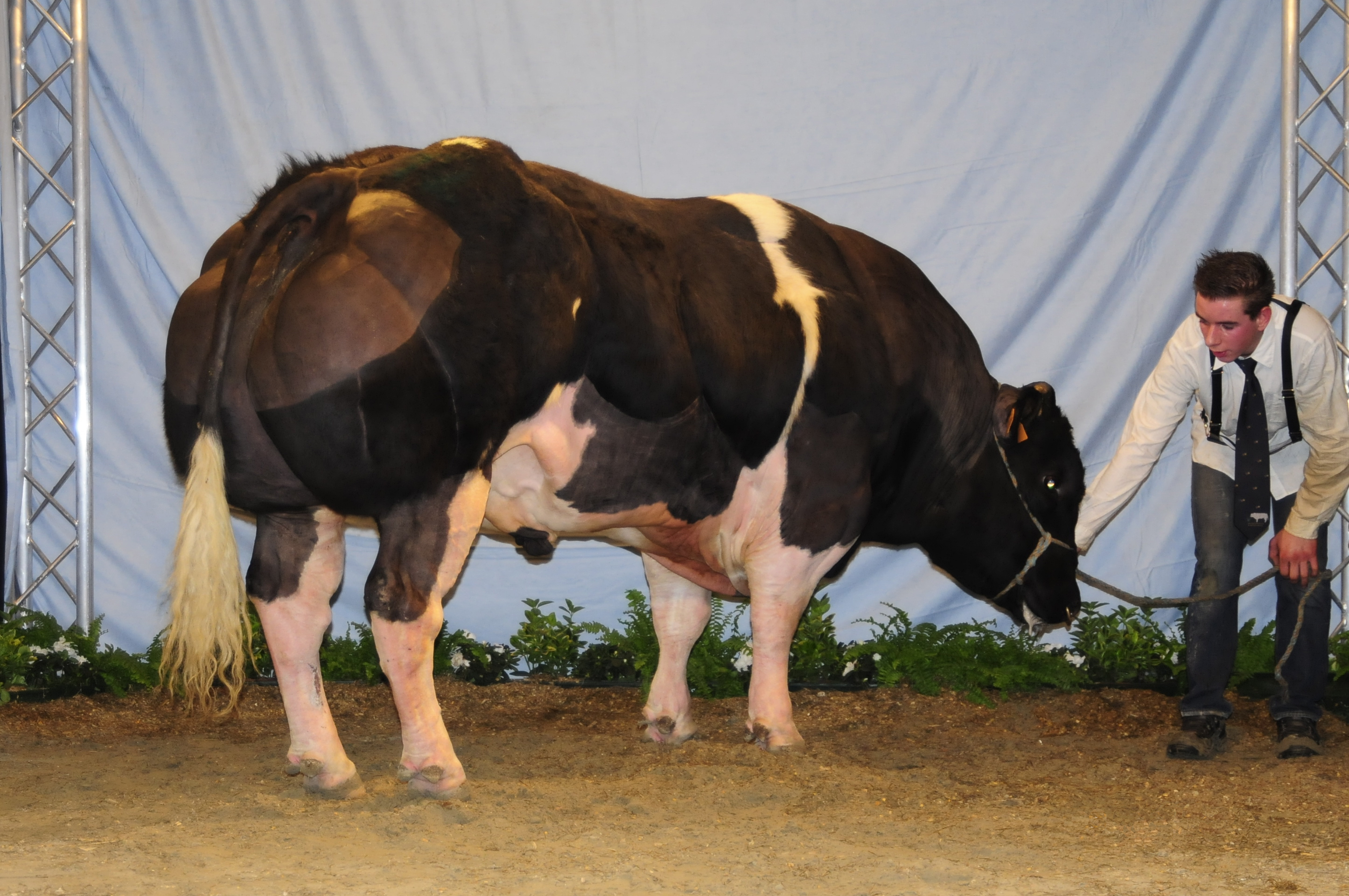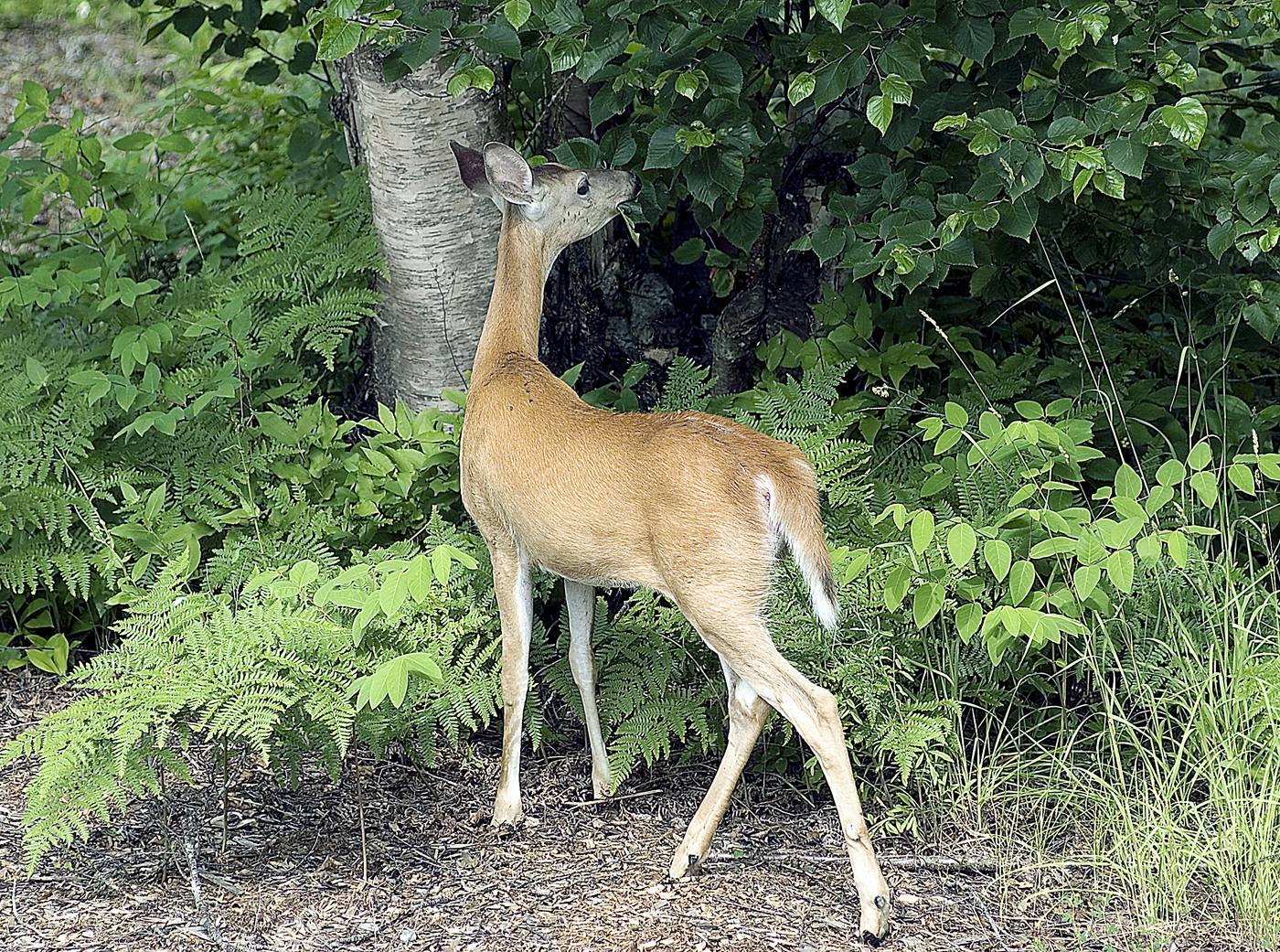|
British White
The British White is a British list of cattle breeds, breed of beef cattle. It is naturally Polled livestock, polled (without horns) and is colour-pointed – white with black or red points on the ears and Muzzle (anatomy), muzzle. It has a confirmed history dating back to the seventeenth century. History White cattle (often with black or red ears) are believed to have been highly regarded in Britain and Ireland in very early times, and herds of white cattle were kept as ornamental and sporting animals in enclosed parks for many centuries. They gave rise to the horned White Park cattle, and contributed to the polled British White. However, British Whites are not as genetically distinct from other British breeds as White Parks are, and so there is some doubt about their exact origins; other breeds such as Shorthorn may have contributed to their development. These cattle were kept in the Park of Whalley Abbey, in the Forest of Bowland near Clitheroe. After that time the major p ... [...More Info...] [...Related Items...] OR: [Wikipedia] [Google] [Baidu] |
Grazing
In agriculture, grazing is a method of animal husbandry whereby domestic livestock are allowed outdoors to free range (roam around) and consume wild vegetations in order to feed conversion ratio, convert the otherwise indigestible (by human digestive system, human gut) cellulose within grass and other forages into meat, milk, wool and other animal products, often on land that is unsuitable for arable farming. Farmers may employ many different strategies of grazing for crop yield, optimum production: grazing may be continuous, seasonal, or rotational grazing, rotational within a grazing period. Longer rotations are found in ley farming, alternating arable and fodder crops; in rest rotation, deferred rotation, and mob grazing, giving grasses a longer time to recover or leaving land fallow. Patch-burn sets up a rotation of fresh grass after burning with two years of rest. Conservation grazing proposes to use grazing animals to improve the biodiversity of a site. Grazing has existed ... [...More Info...] [...Related Items...] OR: [Wikipedia] [Google] [Baidu] |
Galloway Cattle
The Galloway is a Scottish breed of beef cattle, named after the Galloway region of Scotland, where it originated during the seventeenth century. It is usually black, is of average size, is naturally polled and has a thick coat suitable for the harsh climate of Scotland. It is reared mainly for beef. In 2022 the Galloway was reported by twenty-three countries. The worldwide population stood at about head, of which the majority were in Northern Europe, with the largest populations in Denmark and Germany. Etymology The word 'Galloway' derives from the name of a people, the , meaning 'Scandinavian Gaels'. History Polled black cattle were known in Scotland by the sixteenth century at the latest; one is mentioned in an instrument of sasine dated 1523. The Galloway breed comes from the cattle native to the south-west region of Scotland, first fully developed in the seventeenth century. Originally, there was much variation within this breed, including many different colou ... [...More Info...] [...Related Items...] OR: [Wikipedia] [Google] [Baidu] |
Holstein Cattle
The Holstein Friesian is an international breed or group of breeds of dairy cattle. It originated in Frisia, stretching from the Dutch province of North Holland to the German state of Schleswig-Holstein. It is the dominant breed in industrial dairy farming worldwide, and is found in more than 160 countries. It is known by many names, among them Holstein, Friesian and Black and White. With the growth of the New World, a demand for milk developed in North America and South America, and dairy breeders in those regions at first imported their livestock from the Netherlands. However, after about 8,800 Friesians ( black pied German cows) had been imported, Europe stopped exporting dairy animals due to disease problems. Today, the breed is used for milk in the north of Europe, and for meat in the south of Europe. After 1945, European cattle breeding and dairy products became increasingly confined to certain regions due to the development of national infrastructure. This change led ... [...More Info...] [...Related Items...] OR: [Wikipedia] [Google] [Baidu] |
Belgian Blue
The Belgian Blue (, , both literally meaning "Belgian White-Blue") is a breed of beef cattle from Belgium. It may also be known as the , or (literally "fat buttocks" in Dutch). Alternative names for this breed include Belgian Blue-White; Belgian White and Blue Pied; Belgian White Blue; Blue; and Blue Belgian. The Belgian Blue's extremely lean, hyper-sculpted, ultra-muscular physique is termed " double-muscling". The double-muscling phenotype is a heritable condition caused by a deletion in the myostatin gene, resulting in an increased number of muscle fibres (hyperplasia), instead of the (normal) enlargement of ''individual'' muscle fibres (hypertrophy). This particular trait is shared with another breed of cattle known as Piedmontese. Both of these breeds have an increased ability to convert feed into lean muscle, which causes these particular breeds' meat to have a reduced fat content and reduced tenderness. The Belgian Blue is named after its typically blue-grey mottl ... [...More Info...] [...Related Items...] OR: [Wikipedia] [Google] [Baidu] |
Northern Ireland
Northern Ireland ( ; ) is a Countries of the United Kingdom, part of the United Kingdom in the north-east of the island of Ireland. It has been #Descriptions, variously described as a country, province or region. Northern Ireland shares Republic of Ireland–United Kingdom border, an open border to the south and west with the Republic of Ireland. At the 2021 United Kingdom census, 2021 census, its population was 1,903,175, making up around 3% of the Demographics of the United Kingdom#Population, UK's population and 27% of the population on the island of Ireland#Demographics, Ireland. The Northern Ireland Assembly, established by the Northern Ireland Act 1998, holds responsibility for a range of Devolution, devolved policy matters, while other areas are reserved for the Government of the United Kingdom, UK Government. The government of Northern Ireland cooperates with the government of Ireland in several areas under the terms of the Good Friday Agreement. The Republic of Ireland ... [...More Info...] [...Related Items...] OR: [Wikipedia] [Google] [Baidu] |
Irish Moiled
The Irish Moiled is a rare cattle breed from Ireland. It is a dual-purpose breed, reared for both beef and milk. It originated in County Leitrim, County Sligo, County Down, and County Donegal County Donegal ( ; ) is a Counties of Ireland, county of the Republic of Ireland. It is in the Provinces of Ireland, province of Ulster and is the northernmost county of Ireland. The county mostly borders Northern Ireland, sharing only a small b ..., but the breed is now found throughout Ireland. History The Irish Moiled Cow is one of the oldest breeds of cow in Ireland. Throughout the 19th century, they were relatively popular throughout Ireland, due to being a hardy breed that could effectively be used for both their milk and meat. With the introduction of more specialised breeds (such as friesians for milk, herefords/anguses for beef, etc.), their popularity began to decline. By the late 1970s, only 30 cows and 2 bulls remained, being maintained by only two breeders. In 1979 they we ... [...More Info...] [...Related Items...] OR: [Wikipedia] [Google] [Baidu] |
Fjäll Cattle
The Fjäll ( or ) is a traditional Swedish List of cattle breeds, breed of Polled livestock, polled mountain cattle. It was threatened with extinction in the 1970s and 1980s, but recovered after a breed association was formed in 1995, partly thanks to stocks of frozen semen. Microsatellite analysis has shown it to be closely related to the endangered Bohuskulla breed. History There have long been small Polled livestock, polled mountain cattle in Sweden. A text from 1296 AD describes cattle that are "small, hornless, white or whitish grey, often with dark spots". The Fjällras was established as a breed in the nineteenth century. A herd-book was started in 1907. The traditional mountain cattle breeds were very variable. In 1937 a new breed, the Swedish Polled ( or SKB) was created with the intention of merging the Fjällras with the Swedish Red Polled (), a quite different breed of mountain cattle. However, breeders did not accept the new classification, and continued to main ... [...More Info...] [...Related Items...] OR: [Wikipedia] [Google] [Baidu] |
Vaynol Cattle
The Vaynol (Welsh: ''Faenol'', pronounced �veɨnɔl is one of the United Kingdom's rarest breeds of cattle with fewer than 150 breeding animals registered. The breed is currently listed as “critical” on the Rare Breed Survival Trust list. There are currently three officially registered herds of Vaynol cattle existing in the United Kingdom. Together with the Chillingham and White Park cattle, the Vaynol is one of three horned breeds derived from ancient white parkland herds from Britain and Ireland. These park cattle were also the basis of a similar fourth breed, the polled British White. Appearance This endangered breed is very similar to the White Park. Vaynol cattle are angular in appearance with curved hocks and a sloping rump. They can be white with black points or sometimes completely black. The black is found on the ears, eyelids, hooves, nose, on the point of the horns and they sometimes have black socks. The females can have black teats on their udders. They have ... [...More Info...] [...Related Items...] OR: [Wikipedia] [Google] [Baidu] |
Browsing (predation)
Browsing is a type of herbivory in which a herbivore (or, more narrowly defined, a folivore) feeds on leaves, soft shoots, or fruits of high-growing, generally woody plants such as shrubs. This is contrasted with grazing, usually associated with animals feeding on grass or other lower vegetations. Alternatively, grazers are animals eating mainly grass, and browsers are animals eating mainly non-grasses, which include both woody and herbaceous dicots. In either case, an example of this dichotomy are goats (which are primarily browsers) and sheep (which are primarily grazers). Browse The plant material eaten is known as ''browse'' and is in nature taken directly from the plant, though owners of livestock such as goats and deer may cut twigs or branches for feeding to their stock. In temperate regions, owners take browse before leaf fall, then dry and store it as a winter feed supplement. In time of drought, herdsmen may cut branches from beyond the reach of their stock, as fora ... [...More Info...] [...Related Items...] OR: [Wikipedia] [Google] [Baidu] |






